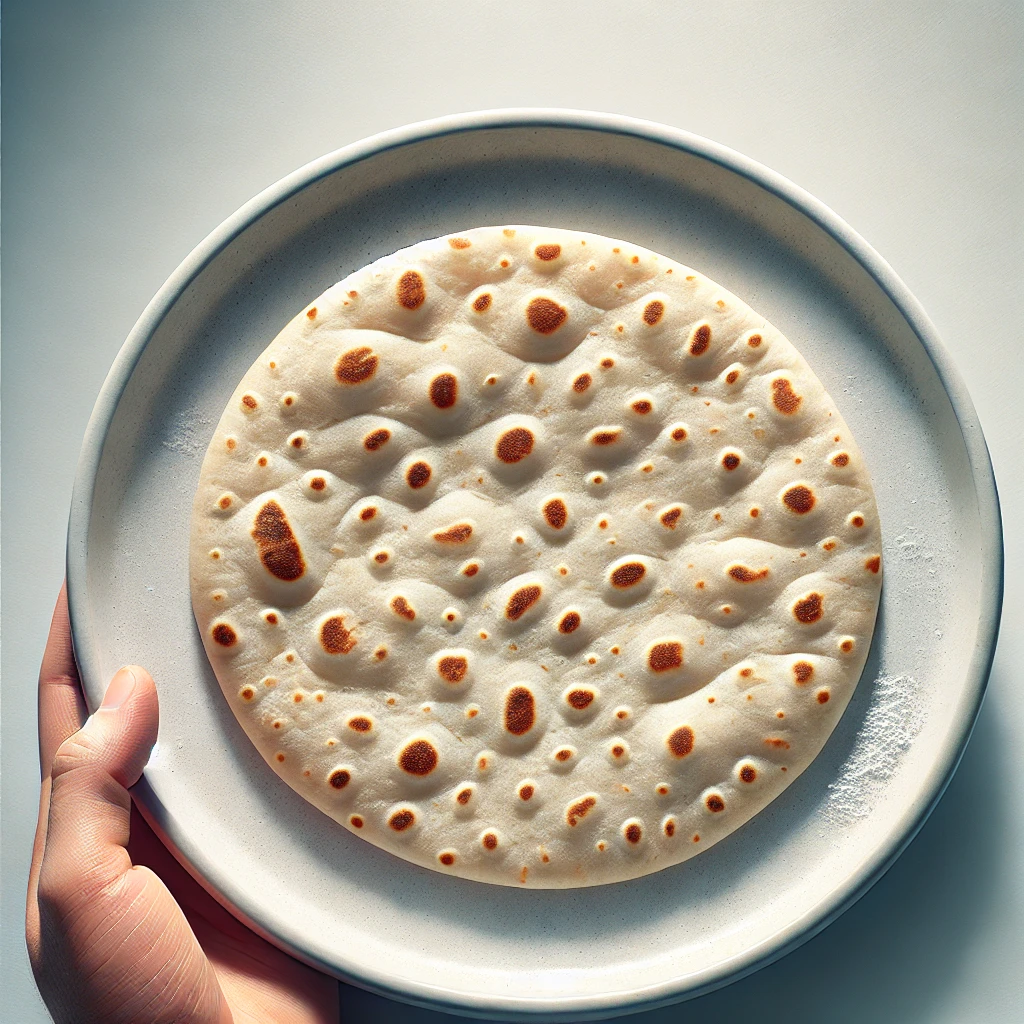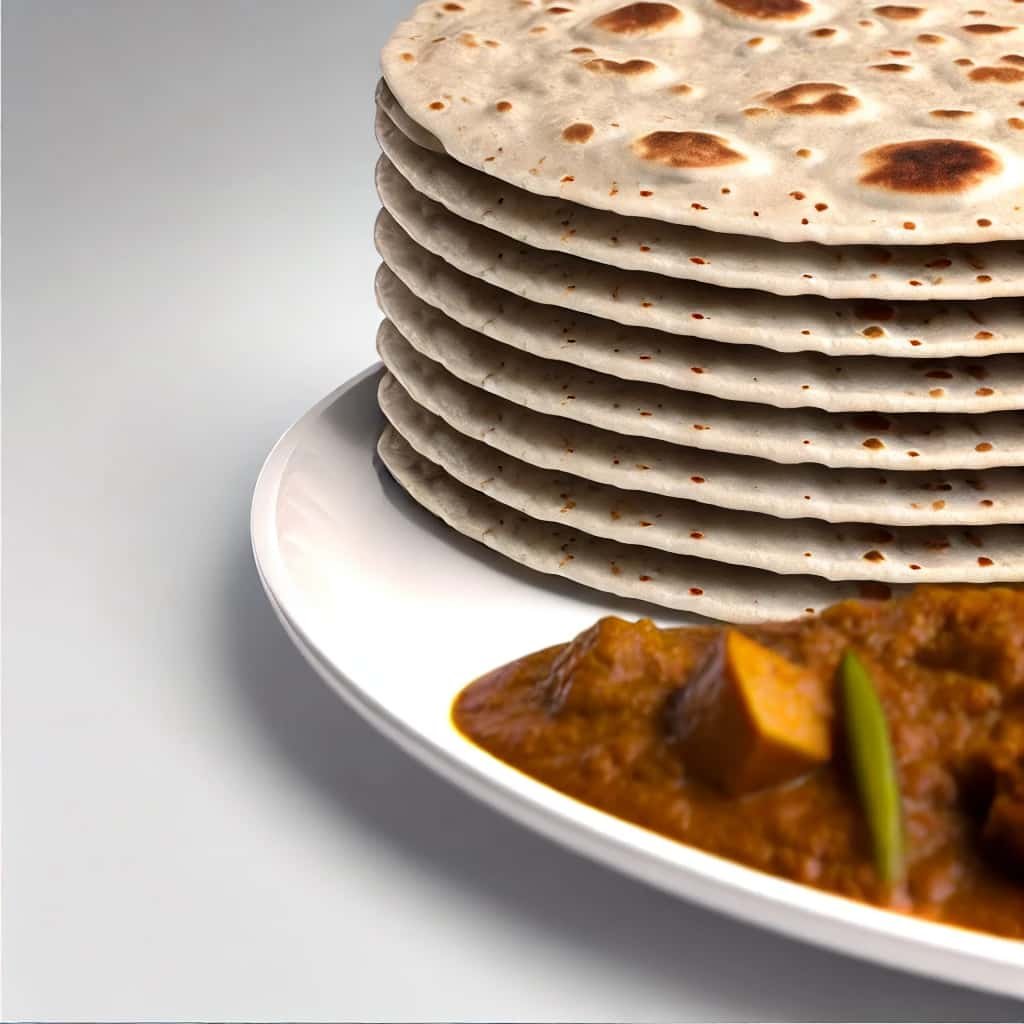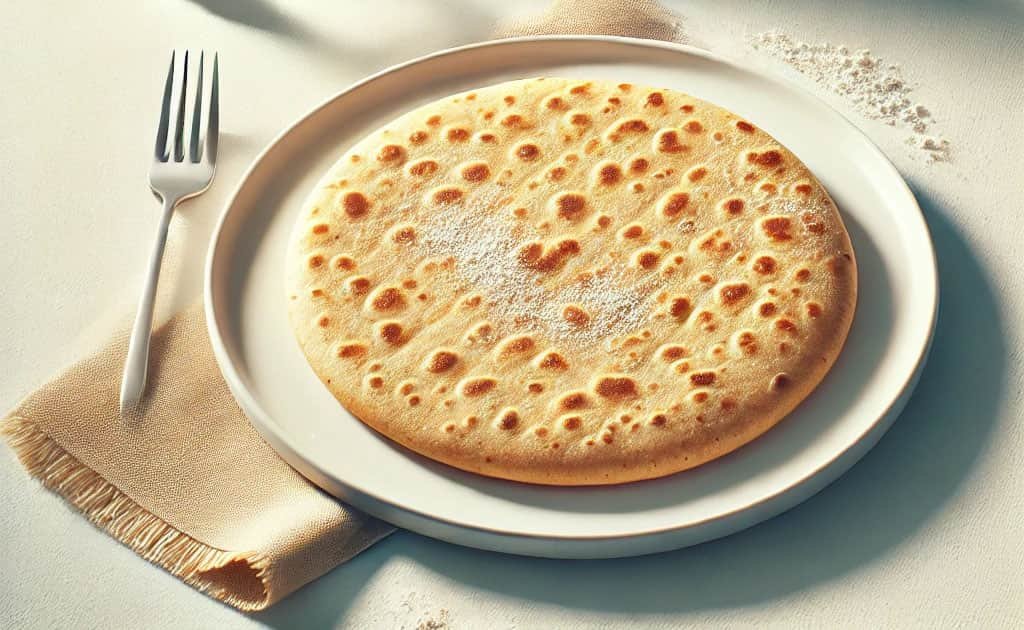When it comes to healthy eating, especially if you’re on a weight-loss journey, choosing the right carbs is essential. Roti, also known as chapati, is a staple food in many Indian households and is often considered healthier than rice. But how does it fit into a weight-loss plan?
In this guide, we’ll dive into the nutritional value of roti, its calories, and whether it’s a good choice for those looking to shed some pounds.
What is Roti or Chapati?
Roti is a type of unleavened flatbread made primarily from whole wheat flour and water. It’s simple to prepare, rich in fiber, and an essential part of daily meals in many parts of India. Read our guide to Indian Salads for Weight Loss.

Unlike bread, which often contains yeast and preservatives, roti is fresh and made from just a few ingredients, making it a natural and wholesome choice.
Calories in Roti
One of the most important aspects of weight loss is managing calorie intake. On average, a medium-sized roti (about 40 grams) contains 70-80 calories.

The number of calories in a roti may vary depending on the size and thickness, but it’s generally a low-calorie option compared to processed bread or other carbohydrate-rich foods. Read our guide to Low Carb Indian Foods.
Nutritional Value of Roti
Roti is packed with essential nutrients that make it a healthy addition to any diet. Here’s a quick look at the nutritional breakdown:
| Nutrient | Quantity (per medium-sized roti) |
|---|---|
| Calories | 70-80 kcal |
| Carbohydrates | 15-18 grams |
| Protein | 2.5-3 grams |
| Fiber | 2 grams |
| Fat | 0.5 grams |
Roti is rich in complex carbohydrates, which provide sustained energy throughout the day, and the fiber content helps keep you full for longer, reducing the temptation to snack.
Is Roti Good for Weight Loss?
Yes, roti can be an excellent choice for weight loss due to its low calorie count, high fiber content, and minimal fat.

Here’s why roti is a good option for your weight-loss plan:
- Low in Calories: With just 70-80 calories per roti, you can easily fit it into a calorie-controlled diet.
- High in Fiber: The fiber in whole wheat roti keeps you feeling full, reducing the chances of overeating or snacking between meals.
- Slow-Release Carbohydrates: Unlike refined carbs, roti is made from whole wheat flour, providing slow-releasing energy that prevents spikes in blood sugar levels.
- Versatile: Roti can be paired with a variety of healthy dishes, like vegetable curries or dals, to make a balanced meal.
How to Include Roti in a Weight-Loss Diet
To make the most of roti in your diet, consider these tips:
- Portion Control: Limit your intake to one or two rotis per meal. Pair with protein-rich foods like lentils or lean meats to make a filling, balanced meal.
- Choose Whole Wheat: Always opt for whole wheat roti over refined flour versions like naan or white bread.
- Healthy Cooking: Avoid adding too much ghee or butter while cooking. A light spray of oil is enough to cook a roti on a tawa (griddle).
Can Roti Cause Weight Gain?
Like any food, roti can contribute to weight gain if consumed in excess. It’s essential to manage your portion sizes and pair roti with nutrient-dense foods like vegetables, lean proteins, and healthy fats. Read our guide to High Protein Vegetarian Indian Meals.

Eating more roti than your body needs, especially when paired with high-fat curries, can lead to an excess calorie intake, resulting in weight gain.
Roti vs. Rice: Which is Better for Weight Loss?
One of the most common debates is whether roti or rice is better for weight loss.

While both are staple carbs, roti has a slight edge over rice for a few reasons:
- Fiber Content: Roti has more fiber than white rice, which helps you feel full longer.
- Lower Glycemic Index: Roti has a lower glycemic index than rice, meaning it causes a slower rise in blood sugar, which is beneficial for weight management.
- Portion Control: Roti is easier to portion control compared to rice, which can easily lead to overeating.
That said, both can be part of a balanced diet if consumed in moderation. For weight loss, whole wheat roti is generally the better choice.
Conclusion: Is Chapati Good for Weight Loss?
If you’re looking for a healthy, versatile carb option, roti or chapati is a fantastic choice. It’s low in calories, high in fiber, and provides slow-releasing energy that helps you stay full longer.

When eaten in moderation and paired with a balanced meal, roti can easily fit into a weight-loss plan. Whether you’re replacing processed bread or rice in your diet, chapati is a natural, wholesome choice for healthy eating.
FAQs
How many calories are in one roti?
A medium-sized roti contains about 70-80 calories, depending on its size and thickness.
Is roti better than bread for weight loss?
Yes, roti is typically better than processed bread because it’s made from whole wheat and doesn’t contain preservatives, making it more nutritious and lower in empty calories.
Can I eat roti every day for weight loss?
Yes, you can eat roti daily as part of a balanced diet. However, portion control is essential. Limit yourself to one or two rotis per meal and pair them with vegetables and lean proteins.
Is roti fattening?
Roti is not fattening on its own. However, adding excess oil, ghee, or pairing it with high-calorie dishes can make it unhealthy. Stick to whole wheat rotis cooked with minimal fat for best results.
What’s the difference between roti and chapati?
Roti and chapati are essentially the same; both are unleavened flatbreads made from whole wheat flour. The terms are often used interchangeably in different regions of India.
How can I make roti healthier?
To make roti healthier, use whole wheat flour, limit the oil or ghee used in cooking, and pair it with nutrient-dense sides like vegetables or protein-rich foods.